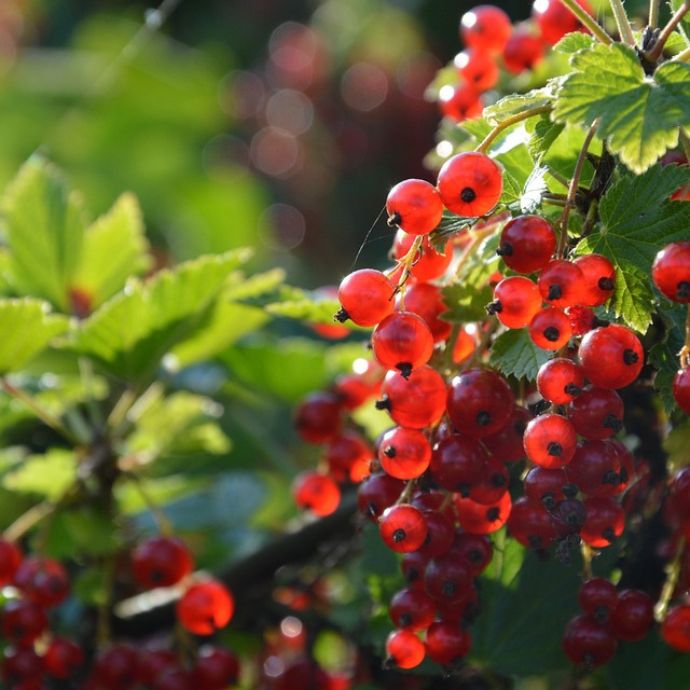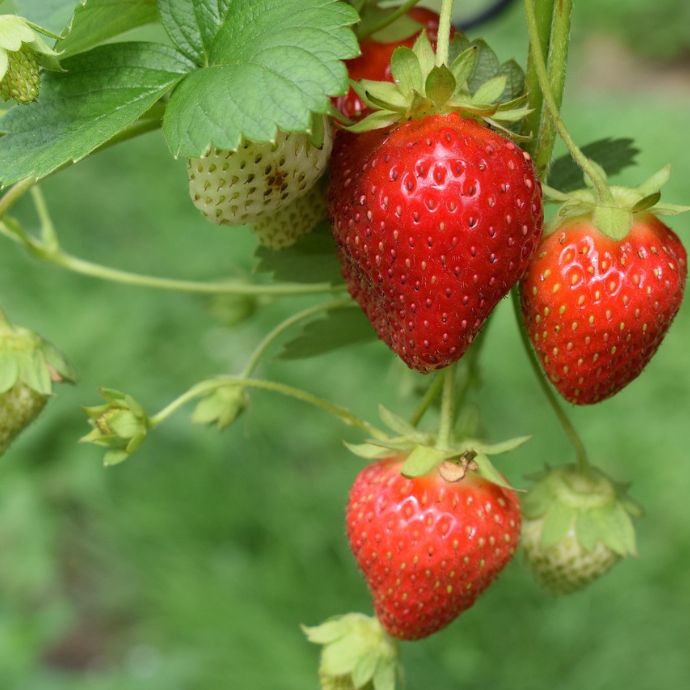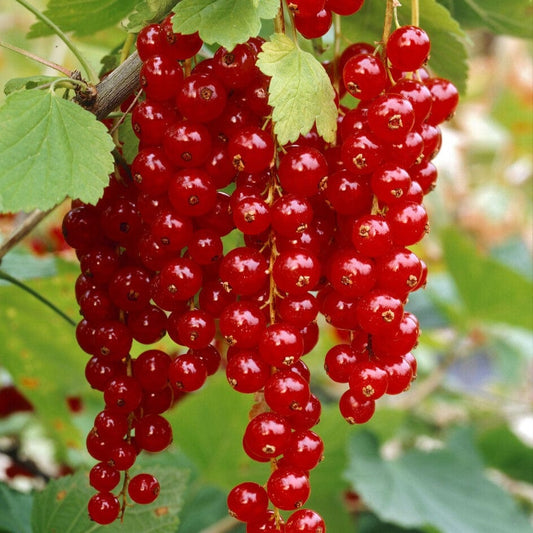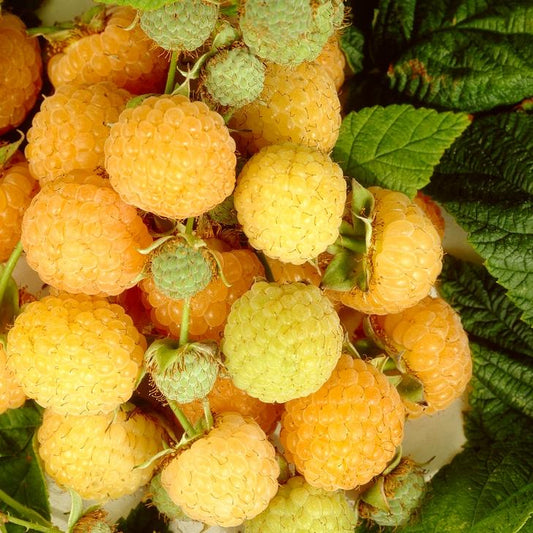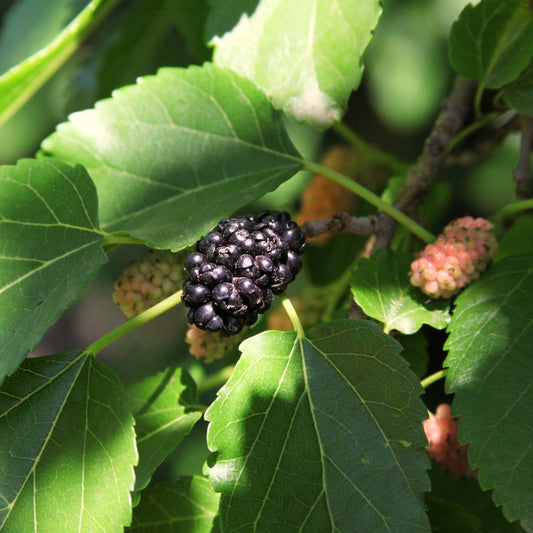Pruning Fruit Bushes, Canes and Vines: A Beginner’s Guide
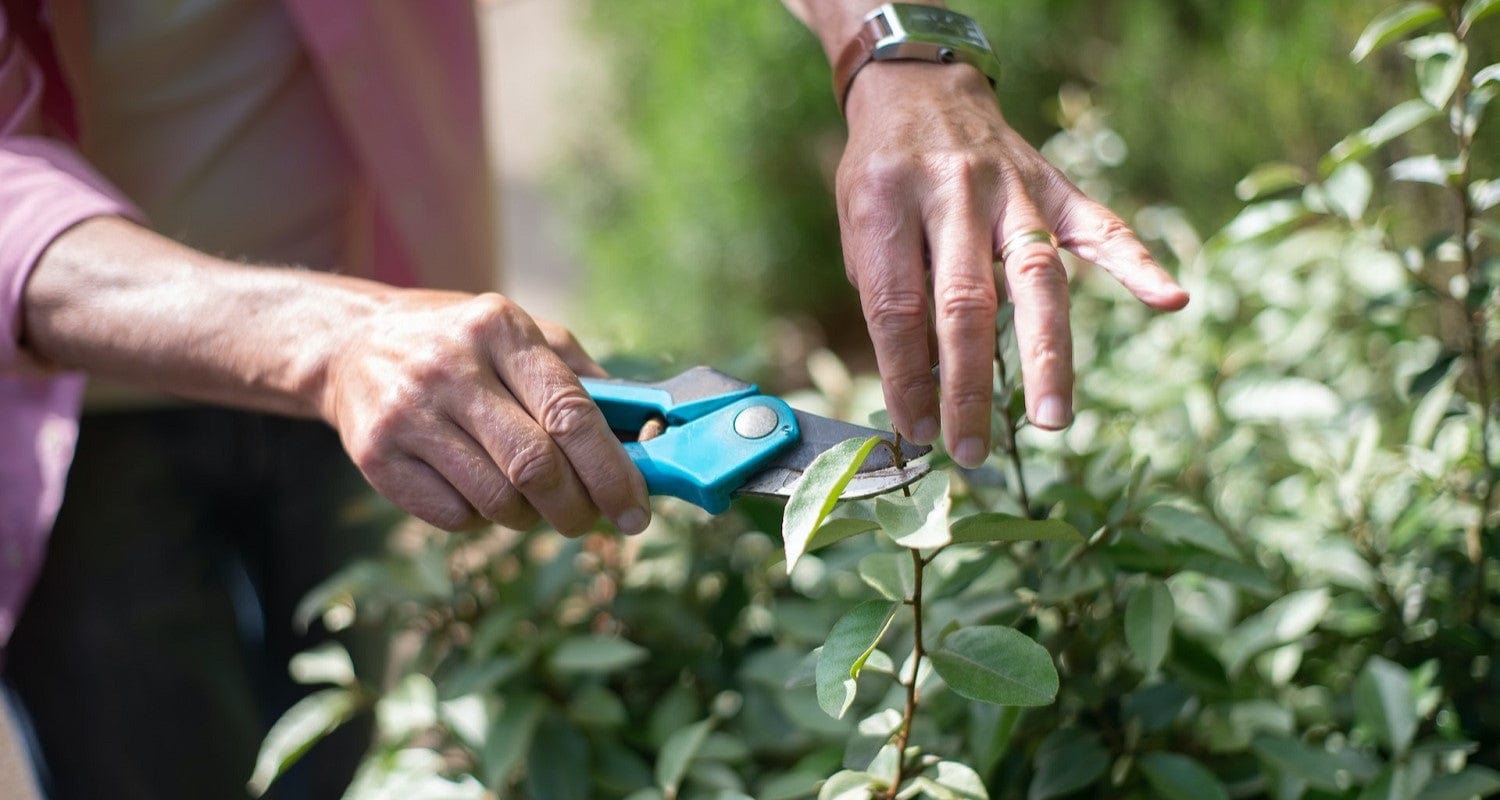
Soft fruit plants are easy to grow, but if you want them to reach their full potential and produce a great crop year after year, you’ll need to do a little pruning. Here’s how to start pruning fruit bushes like a pro…
Jump to:
- Blackberries, loganberries and tayberries
- Blackcurrants
- Blueberries
- Cranberries
- Goji berries
- Grapes
- Honeyberries
- Jostaberries
- Kiwi fruit
- Lingonberries
- Passion fruit
- Raspberries
- Red, pink and white currants
- Strawberries
- Wineberries
Pruning blackberries, loganberries and tayberries
When to prune: after the last harvest in autumn, spring.
Blackberries and hybrid berries grow new canes one year and fruit the next. Once the canes have fruited, they’re not going to fruit again and so they need to be pruned out. Cut them down to ground level and tie in the new ones to your trellis/wires while you’re at it. In spring you can also ‘tip prune’ the canes - this means cutting off the tips of the canes to take them down to about 60cm. For shorter canes, cut off about 2cm - this will make the canes produce more shoots and therefore more fruit!
Pruning blackcurrants
When to prune: January-February.
Identify the oldest blackcurrant stems (they’ll look thicker and darker than the new growth) and cut about a third of them right down to the soil. While you’re at it, remove any weak, crowded or damaged wood. This will encourage new stems to grow and allow more air and light to flow through them in spring.
Pruning blueberries
When to prune: November - March.
Your blueberry plant shouldn’t need any pruning for the first year or two. After that, you can prune out the old woody stems, which won’t fruit again. Cut any old wood back by about a quarter, stopping just before a healthy young bud or shoot.
Pruning cranberries
When to prune: Mid-autumn to winter.
You don’t need to prune your cranberry plant for the first couple of years, apart from removing any dead, diseased or damaged stems or twigs. In the third year, you can cut back any stems (or runners) that grow too long. If the middle of the bush gets too congested, it could lead to fungal disease or mould, so you should thin out this growth.
Pruning goji berries
When to prune: spring.
For the first few years, keep the pruning to a minimum - you just need to remove any dead, diseased or damaged wood and keep your goji berry plant in shape. Removing a few of the oldest stems each year will encourage new growth. When the plant is well established, you can start harder pruning - if you cut the plant down to a low framework in early spring, it should grow back stronger - however this will reduce that year’s crop, so it’s entirely up to you.
Pruning gooseberries
When to prune: winter, midsummer.
Winter prune your gooseberry bush after the leaves have fallen - it makes it easier to see what you’re doing! Prune the new year’s growth back to four buds from the base after fruiting has finished - this will encourage more spurs (the short, chubby twigs where the fruit buds form) to develop the following year. In summer, give it a further trim by cutting all the sideshoots back to two or three leaves from the base. This will create an airy framework of well-spaced branches with lots of fruiting spurs.
Pruning grapes
When to prune: Mid-winter and summer.
It’s really important to prune grapes, otherwise they’ll put all their energy into climbing, rather than fruiting! In mid-winter, prune back some of the side shoots to one or two new buds.
In the summer, shorten any lateral (side) stems that aren’t flowering, leaving up to five side shoots on each.
Pruning honeyberries
When to prune: late winter to early spring.
You don’t need to do any serious pruning for the first four years - after this you should carry out some light pruning every couple of years in order to encourage new shoots and fruit and thin out the centre of the plant, which reduces the risk of fungal disease. Aim to leave around four to six of the healthiest looking old stems and remove any dead, diseased or damaged wood.
Pruning jostaberries
When to prune: winter.
Jostaberries are another low maintenance fruit in terms of pruning. All you need to do is cut out any dead, diseased or damaged stems, then reduce the number of older stems by half to create a nice airy framework, cutting them right down to the ground. Prune out any low growing side shoots and tip prune (remove the first 2cm of the branches) to keep the plant to a manageable size.
Pruning kiwi fruit
When to prune: December to February, July.
In winter, prune back the side branches that have fruited (leaving the main branch alone), leaving 3-4 eyes which will develop future buds. In summer, you can prune and train your kiwi vine when the fruit is about the size of a cherry, keeping 4-5 buds on each branch. This will make the vine channel its energy into fruit rather than new growth.
Pruning lingonberries
When to prune: Late winter/early spring (deciduous varieties), any time of year except late summer/early autumn (evergreen varieties).
First, make sure you know whether your plant is deciduous (loses its leaves in autumn) or evergreen in order to prune at the right time of year. Both are pruned the same way though!
First, remove any dead, diseased or damaged wood as well as any branches that are crossing each other or growing inwards. As a guide, you should be aiming to prune out about a third of the stems every year from mature plants, to encourage new growth.
Pruning passion fruit
When to prune: autumn after fruiting, spring.
First off, remove any dead, diseased or damaged shoots from your passion fruit plant. Then cut back any shoots that have fruited, leaving two buds from the previous year’s growth on each.
Trim the remaining stems, but keep it light or you might see a reduced number of flowers the next year. If your plant is damaged by winter frosts, you can try to rejuvenate it by cutting the stems back to around 30cm, just above a healthy bud - this should be done in spring and will hopefully encourage new green shoots to grow.
Pruning raspberries
When to prune: after harvest/late winter.
Summer fruiting raspberries (like blackberries) fruit on old canes which should be removed after harvest. This leaves room for young, new canes to thrive. For autumn-fruiting raspberries, cut the canes back all the way to the ground late in the winter. This will clear the way for new canes to emerge in the spring, which will fruit during the first year.
Pruning red, pink and white currants
When to prune: June.
The good news is that you don’t have to prune them at all for the first four years - unless there are any diseased, damaged or dead stems. In the fourth year, prune two or three of the oldest branches down to the base of the plant. Leave the current growth alone, but the older branches will have side shoots - prune these back to two buds. Doing this will make room for new stems to form.
Pruning strawberries
When to prune: as and when.
You don’t have to prune strawberries, but after they fruit, you’ll see them putting out long thin stems called runners, which can be cut off and potted up to form new plants or left to take root in the soil around your existing plants. You could also prune out the dead leaves in autumn or winter, but this isn’t absolutely necessary.
Pruning wineberries
When to prune: autumn.
Wineberries bear fruit on floricanes (the previous year’s canes). Just as you would with summer fruiting raspberries, wait until autumn when the harvest is finished and the fruited canes start to die. Prune these old canes back almost to the ground and the plant will produce new ones the next year.
Questions about pruning? Get in touch with our team for more support and advice - you can email us at support@rootsplants.co.uk or live chat from any page of our website.Last updated: 13/11/2023





